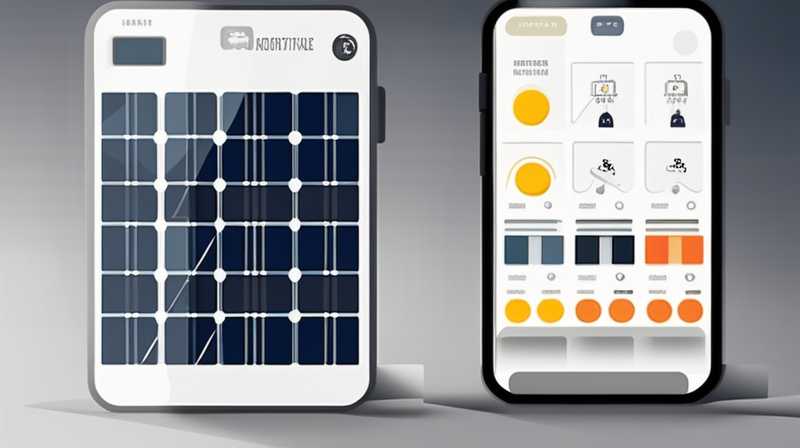
1. Constructing solar photovoltaic systems requires careful consideration and execution: 1. Understand the basic components involved, 2. Conduct a thorough site assessment, 3. Ensure compliance with regulations and standards, 4. Implement proper installation techniques, 5. Establish a maintenance plan for performance optimization.
To elaborate, a crucial step involves understanding the fundamental components, including solar panels, inverters, mounting systems, and batteries. Each component plays a vital role in the overall efficiency and effectiveness of the solar photovoltaic system. A comprehensive grasp of these elements is essential for successful construction.
1. UNDERSTANDING SOLAR PHOTOVOLTAIC SYSTEMS
Solar photovoltaic (PV) systems convert sunlight into electricity, thus offering an environmentally friendly energy solution. Components of a PV system primarily include solar panels, inverters, charge controllers, batteries, and the framework for mounting these elements. Each of these components plays a significant role in energy capture, conversion, and storage.
Solar panels, often made from silicon, absorb sunlight and produce direct current (DC) electricity. This electricity is then converted to alternating current (AC) by an inverter, making it usable for homes and businesses. Additionally, the mounting structures ensure the panels are positioned optimally to maximize sunlight exposure, thus enhancing efficiency. Proper understanding of each component is the foundation for subsequent successful implementation.
2. SITE ASSESSMENT AND PLANNING
Before embarking on construction, conducting a thorough site assessment is imperative. Factors such as solar radiation, geographic conditions, and shading from nearby structures must be evaluated to determine the optimum placement of solar panels. This evaluation helps in identifying the most suitable locations for installation, which can significantly influence the overall output of the system.
Moreover, assessing local climate conditions provides insight into how varying weather patterns might affect system performance. For instance, regions with frequent cloud cover will require different considerations compared to areas that receive abundant sunlight year-round. Meticulous planning can lead to successful site selection, ultimately maximizing energy production and enhancing return on investment.
3. COMPLIANCE WITH REGULATIONS AND STANDARDS
Adhering to local laws and safety standards is crucial during the construction of solar photovoltaic systems. Building codes, electrical codes, and zoning laws play a significant role in the planning and installation processes. It is essential to familiarize oneself with these regulations to avoid potential fines or mandatory deconstruction.
Permits may be necessary for installation, depending on local governance. Engaging with local authorities can ensure that all legal requirements are met, enabling a smooth construction process. Non-compliance can cause interruptions, delay projects, and lead to unexpected costs. This diligence not only protects investment but also ensures the safety and effectiveness of the installation.
4. INSTALLATION TECHNIQUES
The actual process of installing solar photovoltaic systems necessitates a detailed understanding of best practices. Proper alignment, secure mounting, and effective wiring are pivotal. Panel positioning directly affects energy capture; hence, they should be angled accordingly to optimize solar exposure based on geographic location.
Installation techniques vary depending on roofing versus ground-mounted installations. Each approach involves distinct strategies for mounting and securing panels. Wiring must also be done meticulously to reduce power loss and enhance system efficiency. Ensuring all connections are robust and secure helps prevent future maintenance issues and promotes longevity.
5. MAINTENANCE AND PERFORMANCE OPTIMIZATION
Post-installation, a diligent maintenance plan is vital for ensuring the system operates effectively over its lifetime. Regular inspections, cleaning of solar panels, and monitoring system performance are essential components of this plan. Dust, debris, and environmental factors can impede energy production; therefore, establishing a consistent cleaning schedule can significantly improve efficiency.
Furthermore, employing monitoring tools provides real-time data about system performance. This enables prompt identification of issues, which can be critical for maintaining optimal functionality. By anticipating potential problems and proactively addressing them, system efficiency can be preserved, and unexpected costs can be minimized over time.
FREQUENTLY ASKED QUESTIONS
WHAT ARE THE MAIN COMPONENTS OF A SOLAR PHOTOVOLTAIC SYSTEM?
The primary components of a solar photovoltaic system include solar panels, which capture sunlight and convert it into electricity, inverters that change DC electricity produced by the panels into AC electricity suitable for home use, charge controllers that manage battery charging for off-grid systems, batteries that store excess energy for later use, and the mounting structures that hold the panels in place. Each component plays an integral role in the system’s overall functionality, ensuring maximum output and efficiency.
HOW DO I DETERMINE THE BEST LOCATION FOR INSTALLATION?
Determining the optimal location for the installation of solar photovoltaic systems involves a comprehensive assessment of several factors. These include evaluating solar radiation levels specific to the area, examining geographic features that may cause shading, considering the structural integrity of roofs or ground mounts, and evaluating potential obstructions. Moreover, understanding local climate conditions will provide valuable insight into the variations in solar energy availability throughout different seasons.
WHAT TYPE OF MAINTENANCE IS REQUIRED FOR SOLAR SYSTEMS?
Maintaining solar photovoltaic systems entails a blend of regular inspections, cleaning the panels to remove dust and debris, and monitoring system performance. Establishing an efficient maintenance schedule ensures that any potential problems are identified early and rectified quickly to avoid prolonged system inefficiencies. Regular checks, including visual inspections of wiring and connections, can also prevent deterioration, significantly enhancing the lifespan and productivity of the solar system.
Ensuring a successful venture into solar photovoltaic systems demands a blend of strategic planning, rigorous compliance measures, meticulous installation processes, and ongoing maintenance practices. The journey begins with understanding the core components, leading to thoughtful site assessments and necessary regulatory adherence that ensures the system aligns with local codes and standards. Effective installation depends on harmonious techniques that optimize system output while maintaining safety and performance. Finally, a steadfast commitment to routine maintenance will undoubtedly yield optimal results, ensuring longevity and efficiency. By comprehensively following these guidelines, one can harness the immense potential of solar energy, contributing positively to environmental sustainability while simultaneously achieving personal energy goals.
Original article by NenPower, If reposted, please credit the source: https://nenpower.com/blog/how-to-construct-solar-photovoltaic/


